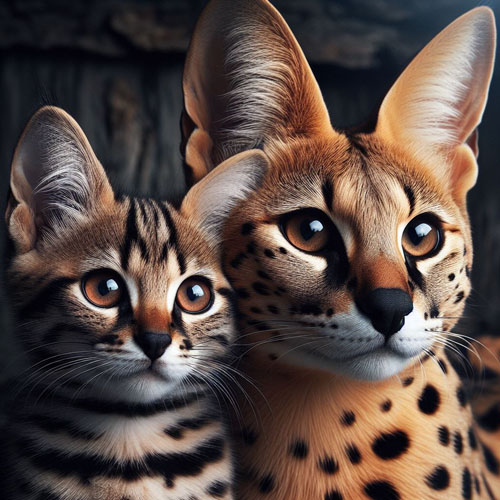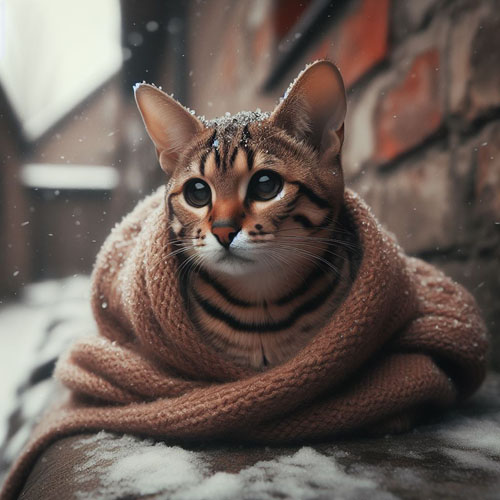African Serval Cats: Majestic Predators of the African Savannah
The African Savannah is home to a diverse range of wildlife, including the magnificent African Serval cat. With its striking appearance and unique behaviors, the African Serval is a fascinating creature that roams the vast grasslands of Africa. In this blog post, we will delve into the world of African Serval cats, exploring their habitat, behavior, and diet.
Habitat and Range: The African Serval cat is primarily found in the grassy plains and savannahs of Africa. Its range extends from the southern regions of the continent, including countries like South Africa and Namibia, to the eastern parts, such as Kenya and Tanzania. These cats are well-adapted to the open grasslands, where they can utilize their exceptional hunting skills.
Physical Characteristics: The African Serval is a medium-sized wild cat, roughly 40 pounds, known for its distinctive appearance. It has a slender body, long legs, and a small head with large, rounded ears. The coat of the Serval is characterized by a pattern of bold black spots on a tawny or golden background, providing excellent camouflage in the grassy terrain. This unique coat pattern is one of the reasons why the African Serval is often referred to as the “miniature cheetah.”
Behavior and Hunting Techniques: African Serval cats are solitary animals, preferring to roam and hunt alone. They are primarily nocturnal, which means they are most active during the night. These cats are excellent hunters, relying on their keen senses and agility to catch their prey. Their long legs enable them to leap high into the air, allowing them to pounce on unsuspecting birds or small mammals. The African Serval is also known for its ability to detect prey using its large ears, which can rotate independently to pinpoint the source of sound. IV. Diet and Feeding
Habits: The diet of the African Serval primarily consists of small mammals, such as rodents, hares, and birds. They are also known to feed on reptiles, insects, and occasionally fish. These cats are skilled hunters, using their exceptional speed and agility to catch their prey. Once they have captured their meal, they will consume it immediately or carry it to a safe location to avoid competition from other predators.
Conservation Status and Threats: While the African Serval is not currently listed as an endangered species, it faces several threats in the wild. Habitat loss due to human activities, such as agriculture and urbanization, poses a significant risk to their survival. Additionally, illegal hunting and trapping for their fur and body parts also contribute to the decline in their population. Conservation efforts, including the establishment of protected areas and education about the importance of preserving their habitat, are crucial for the long-term survival of these magnificent creatures.
Conclusion: The African Serval cat is a remarkable predator that thrives in the vast grasslands of the African Savannah. With its unique physical characteristics, exceptional hunting skills, and ability to adapt to its environment, the African Serval is a true symbol of the wild. As we continue to learn more about these fascinating creatures, it is essential that we work towards their conservation and ensure that future generations can witness the beauty and grace of the African Serval in its natural habitat.
Keywords: African Serval, African Savannah, grasslands, behavior, diet, hunting, conservation





